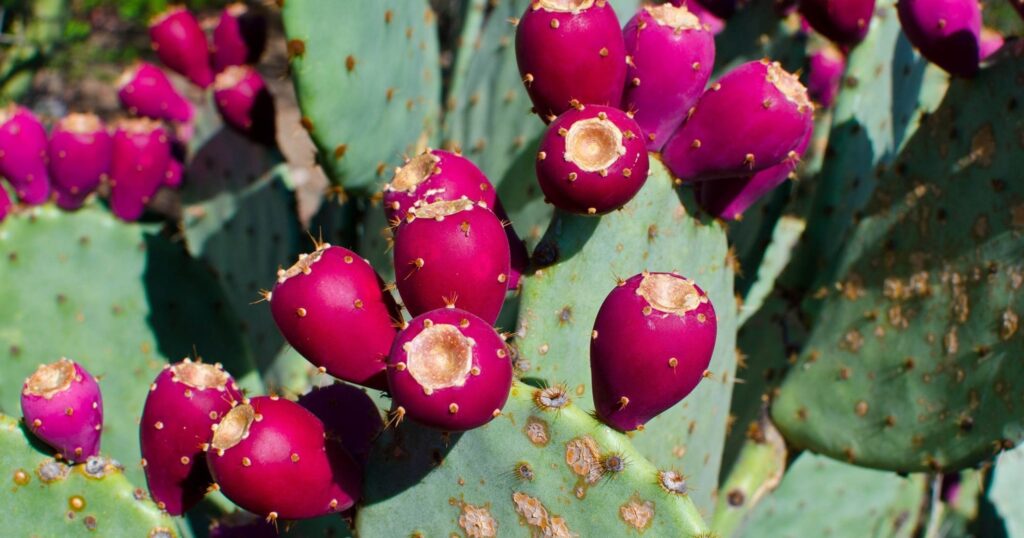Did You Know?
Prickly pear (Opuntia sp.) are members of the Opuntia family of which there are over 100 species most of which are native in the US. Both the fruit (called a tuna) and the pads (called nopales) of the prickly pear are consumed as food. In addition, a red dye can be obtained from the cochineal scale insect that lives on the plant. The dye is a common food additive as well as being used in cosmetics, so it is very likely that you have consumed some of this bug juice. The prickly pear is the State Plant of Texas.

Types of Prickly Pear
Out of the hundreds of species, the most common varieties in our area are the Engelman’s prickly pear (Opuntia englemanii) and the Plains prickly pear (Opuntia macrorhiza). There is also a thornless variety that was developed by Luther Burbank and can be found in the nursery trade – Opuntia ficus-indica. This might be a good choice for areas where folks might accidentally brush up against the plant.
When to Plant
Prickly pear can be easily propagated from cuttings taken in the Spring or later. Remove a pad at the joint, leave in a warm place out of direct sunlight until a callus forms then plant ½ inch deep in either potting medium or in garden soil. Keep moist indoors or in filtered sunlight until significant growth has taken place then move to a permanent location. Pads can also be rooted by weighting or pinning a branch to the ground – once roots have formed, the branch can be cut from the mother plant. Starting plants from seeds takes a bit longer. Seeds need to be harvested from mature fruit then scarified and cold stratified in the refrigerator for a few weeks before starting in potting soil indoors or in a greenhouse. Seedlings can be set out in the Spring.
Harvest and Storage
Long pants, long sleeves and gloves are recommended when harvesting prickly pear to protect from the thorns and the fine prickles (aka glochids). The glochids are a particular nuisance because they are barbed and difficult to remove. Pads can be harvested almost any time and are best while still relatively young and tender. The thorns and glochids must be carefully removed from the pads by scraping or abrading. Pads are usually used soon after harvest as nopalitas with eggs and in salads and tacos. The tunas are best harvested when fully ripe as indicated by a completely red color generally in August and September. Fruit can be processed whole then strained to remove the pulp and thorns and glochids. The fruit can be peeled and eaten fresh or made into jelly, candy, and beverages. The juice added to tequila is known as a Fiesta Margarita. Pads and fruit can be kept for a few days under refrigeration.
By: Michael Vidrine
